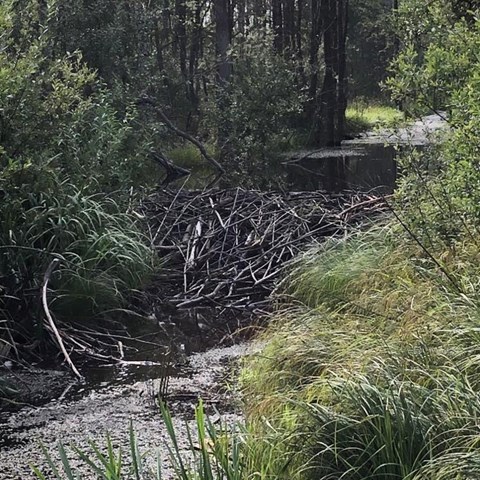Contact
Department of Aquatic Sciences and Assessment, Division of Geochemistry and Hydrology

In this project we will study how restored and created wetlands in forest landscape affect methylmercury concentrations in water and the flora and fauna. The wetlands in the study are either restored wetlands or beaver ponds, which are compared to natural wetlands. In this project we will also study how bats are affected by methylmercury concentrations at the base of food chain.
Forest soils have retained high loads of anthropogenic mercury since the start of the industrial era. Inundation of forests, that flood terrestrial soils, can mobilise legacy mercury and promote the transformation of inorganic mercury to its bioaccumulative form methylmercury. Methylmercury can biomagnify in the food chain, and result in toxic levels in aquatic top predators. Also animals that feed on aquatic biota can be exposed to high levels of mercury. In this project, we will study the role of newly created human- and beaver-induced wetlands for methylmercury formation and transfer across aquatic-terrestrial food webs, up to bats (Myotis daubentonii) that feed on insects emerging from the water.
Restoring formerly drained peatlands is encouraged from a political level to e.g. reduce flooding and droughts. An increasing number of inundations in the forest landscape are also created by an increasing beaver population. Ecosystem services provided by wetland restoration and beaver ponds, however, come with the likely cost of elevated methylmercury in water and biota.
In INFORM-Hg we will study Hg in aquatic-terrestrial food chains in wetlands restored on drained peatlands, wetlands created by beavers and natural wetlands (as a reference) to test:
These objectives will be addressed by combining mercury (and methylmercury) analyses of water, algae, aquatic insects, and bats, as well as stable isotope and fatty acid biomarker techniques, to identify the trophic transfer of Hg across the aquatic-terrestrial food chain. Samples will be collected in the runoff water from restored wetlands and drained reference wetlands, beaver ponds and reference watercourses, and natural wetlands. In total, around 70 sites will be sampled. We will focus on aquatic invertebrates and bats as indicators of Hg transfer across the aquatic-terrestrial food chain. Bats, which are confined to a specific area (i.e. their home range) and consume their diet from that area, can be used as bioindicators of the environmental risk of that habitat. Bats are also suitable bioindicators of Hg exposure as they are long-lived and have a high metabolic rate and food intake.
Participating researchers: Karin Eklöf (project leader, SLU), Frauke Ecke (University of Helsinki and SLU), Willem Goedkoop (SLU), Johnny de Jong (SLU)
Research assistants: Kajsa Weslien (SLU), David Kniha (SLU), Maidul I. Choudhury (previously SLU), and Joel Segersten (SLU).
Financier: This study is funded by Formas # 2020-00962.